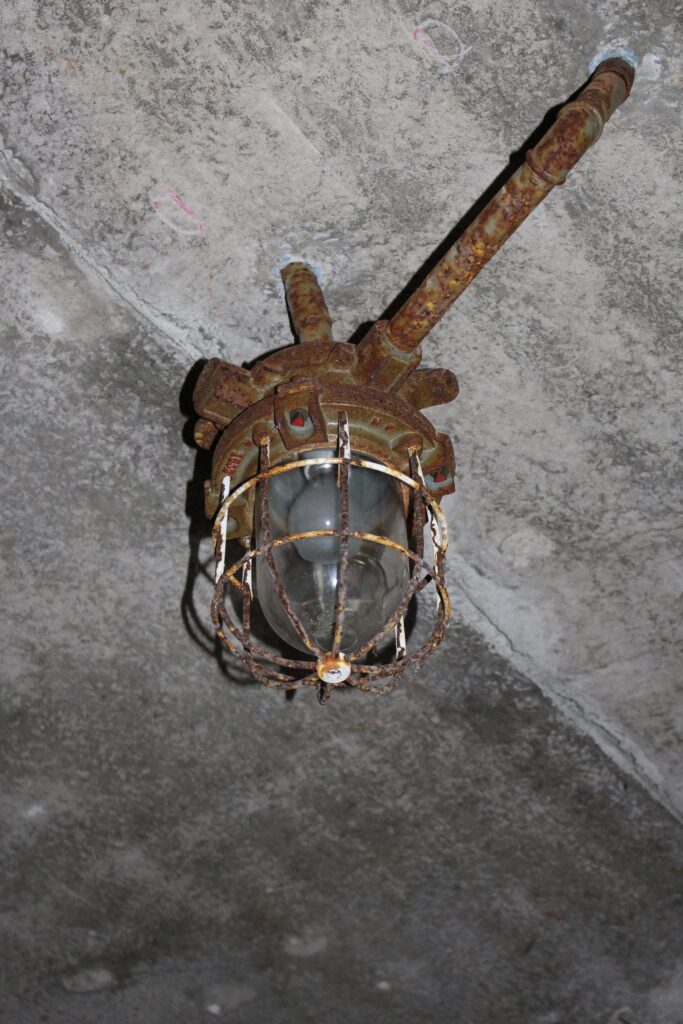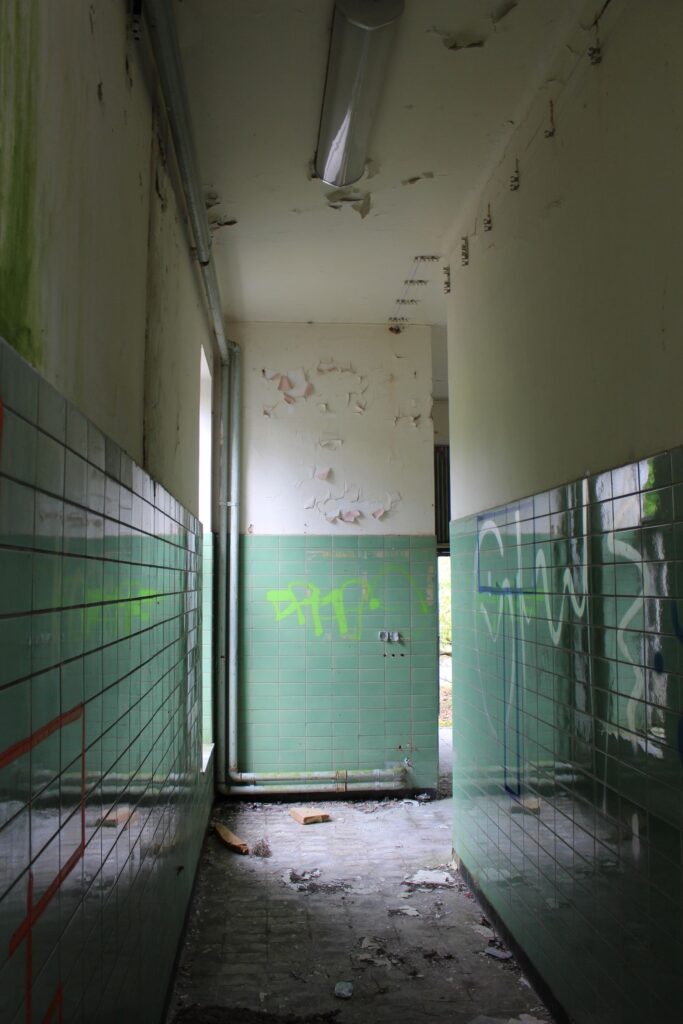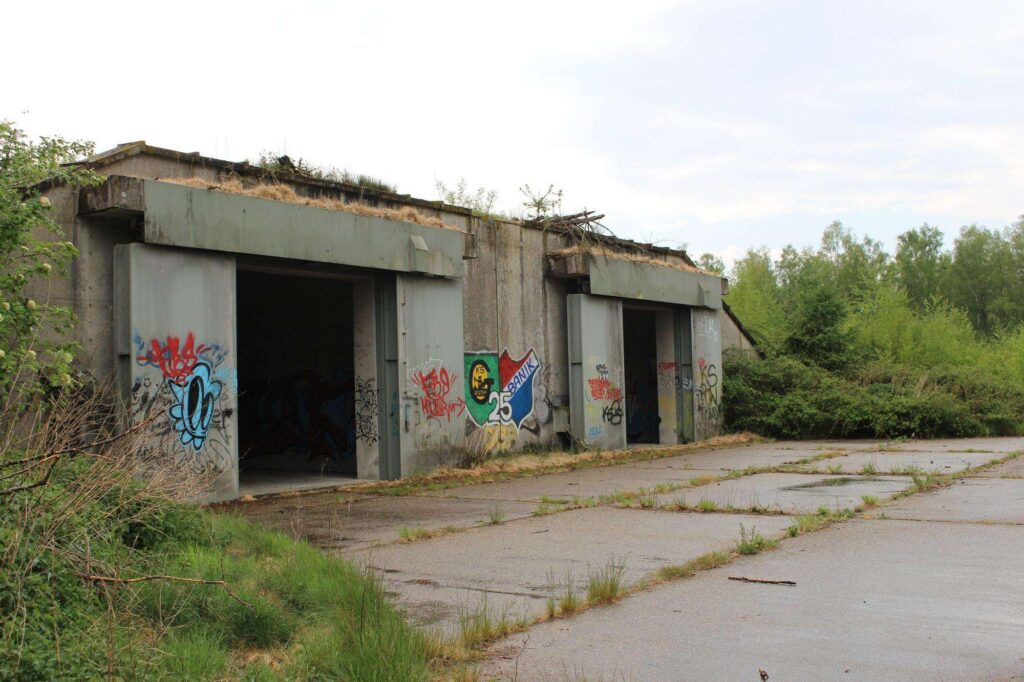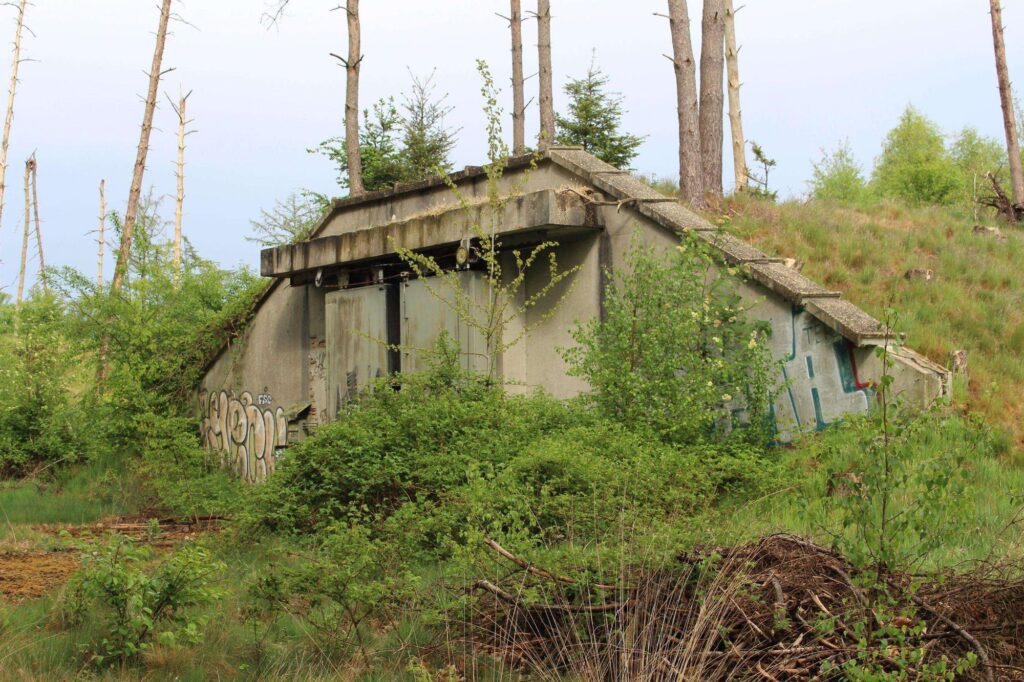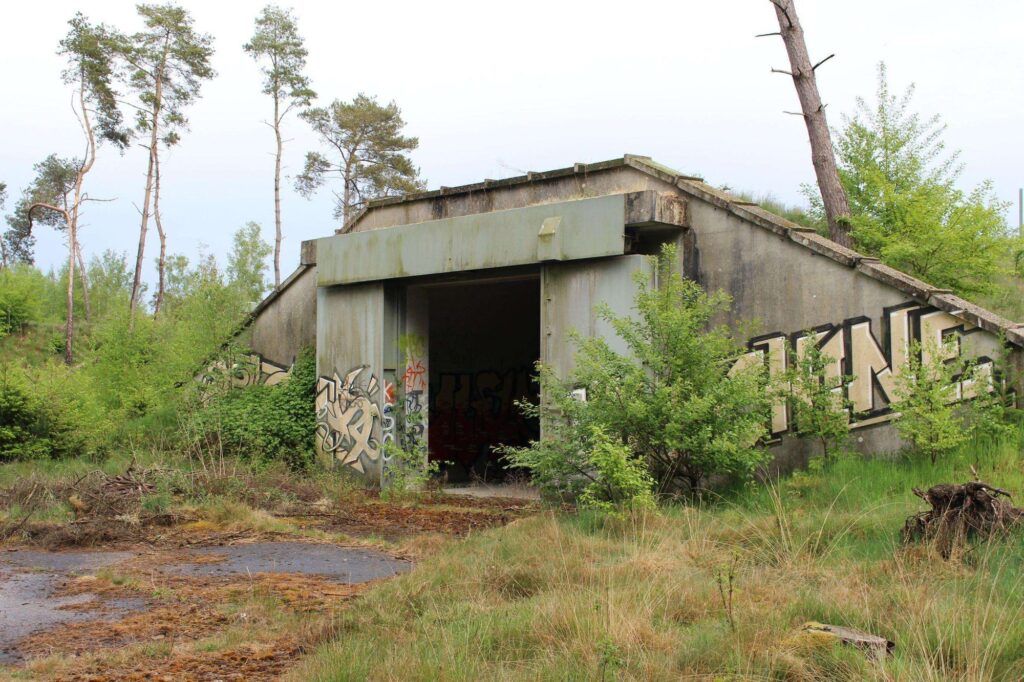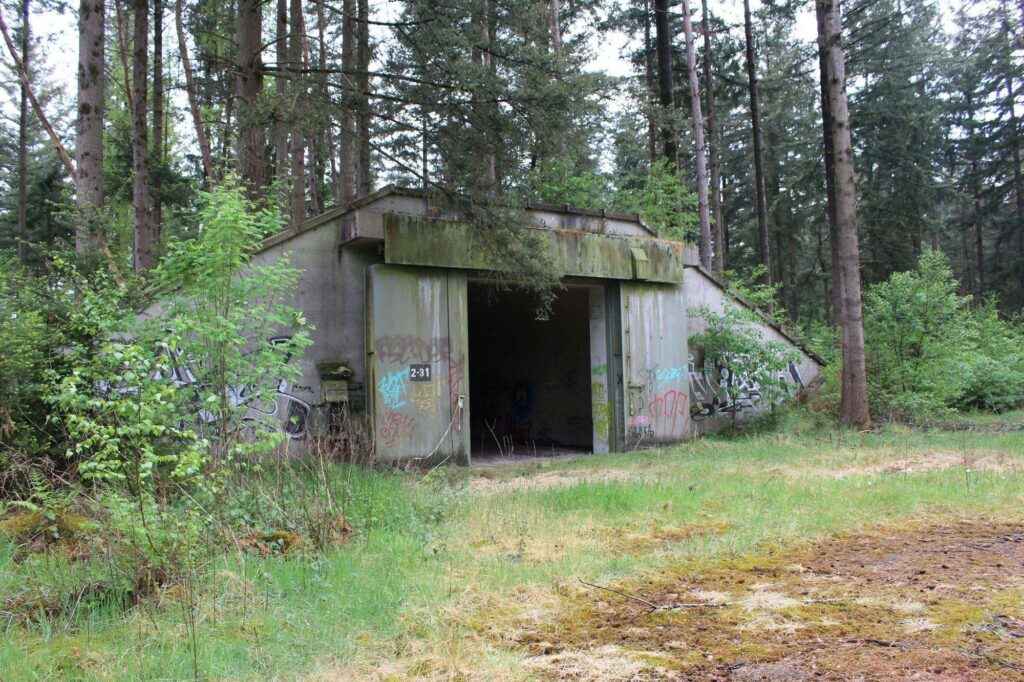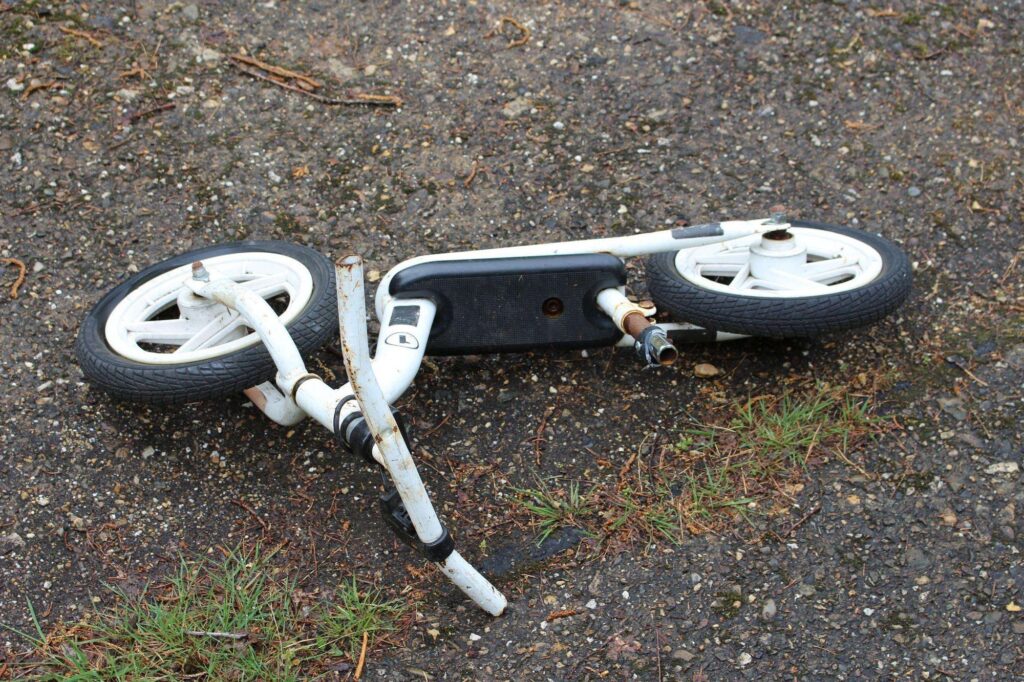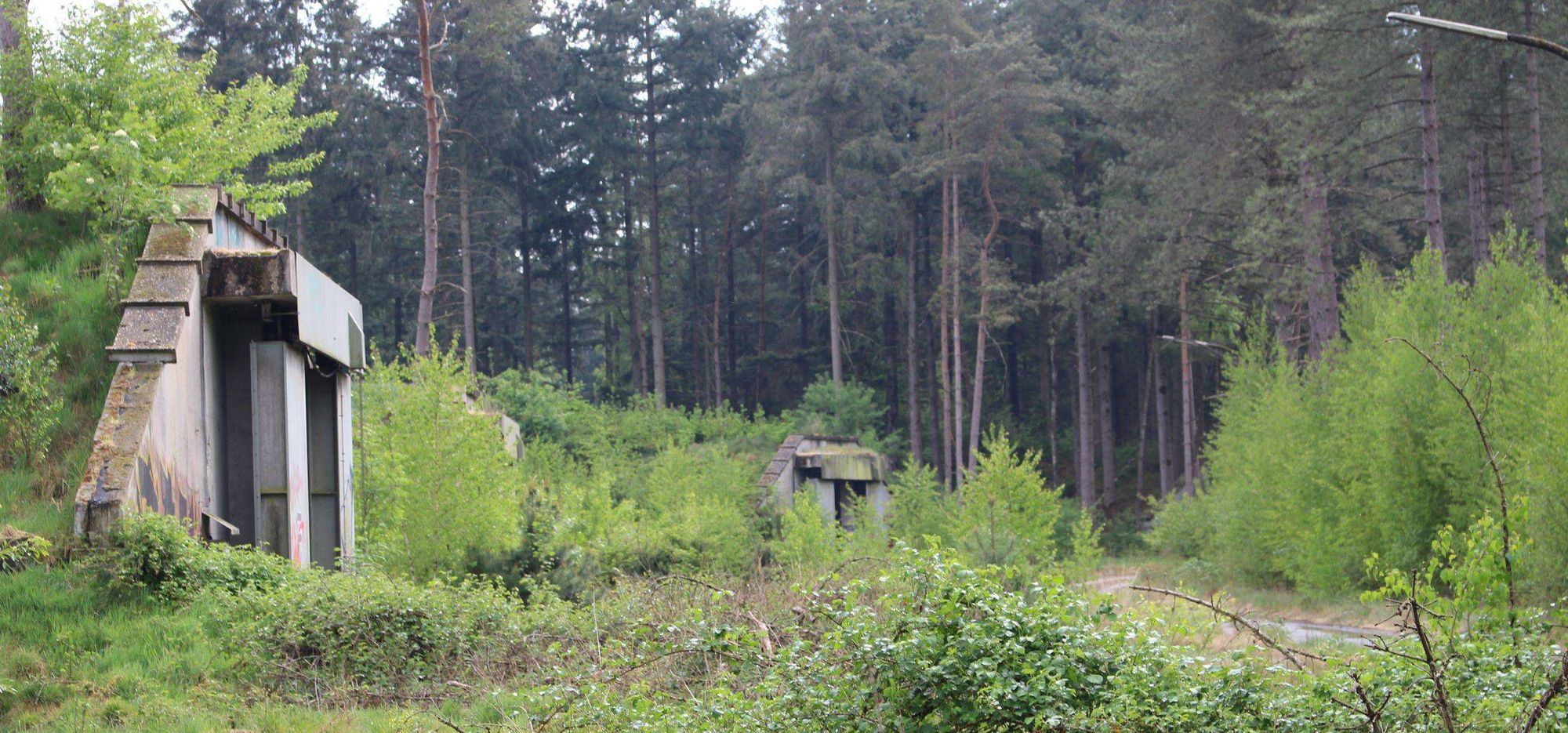Located in the province of Antwerp lies a hidden and forgotten military depot. This depot was used to store ammunition for the army of Germany. The depot was owned by the government of Germany; after consulting with the government of Belgium, an agreement was made, and 100 hectares (247 acres) of land was sold to the government of Germany. Approximately 80 bunkers were built by the Germans; the depot opened on the 7th of June 1960, and went out of service somewhere in 1997.
The depot is located in the middle of a forest, making it somewhat hard to find. Due to its location, and the fact that it went out of service in 1997, a large portion of the depot has been taken back by nature. As of now it is a forest with a lot of bunkers and a few buildings.
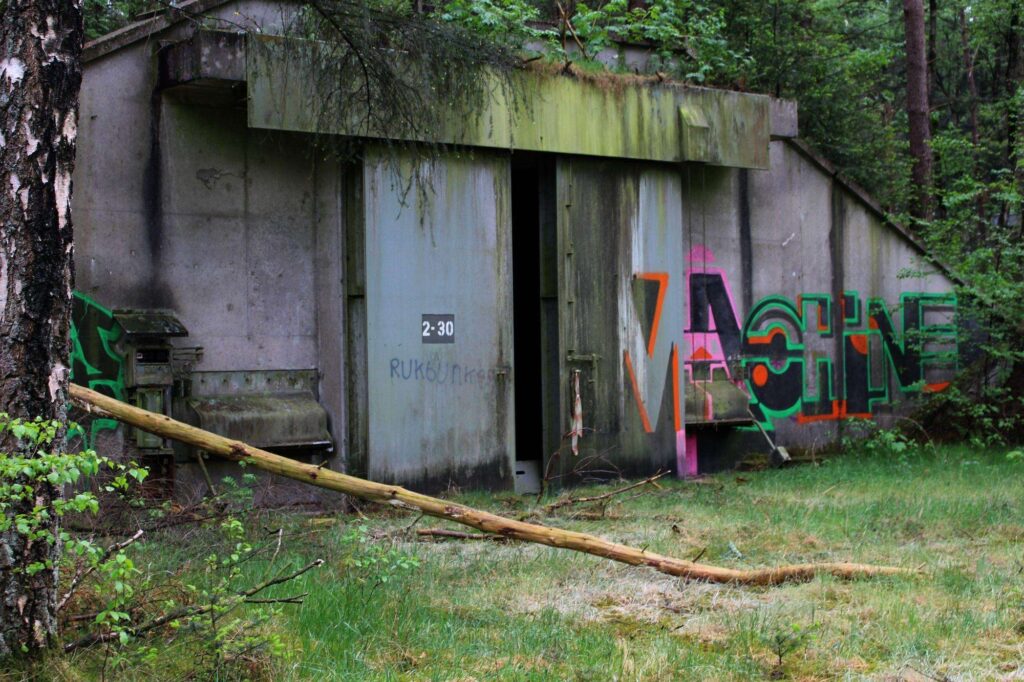
We visited this depot on the 6th of May 2022. After some exploring, we found a hole in the fence. Large parts of the terrain consists of forest, so we had a little hike ahead of us. After making our way through, we stumbled upon an empty hangar. As it started to rain, we decided to use this hangar as a temporary shelter until the rain started to soften.
After the rain had softened, we made our way up a road, where we came across a small garage building, nothing special. Up ahead was a crossing, with a building on the left and bunkers on the right. We decided to explore the building first; it appears to be some kind of cafeteria. Unfortunately, a lot of vandalism has taken place, leaving the place completely trashed and empty. We walked around for a few minutes and took some pictures. Off to the bunkers we go!
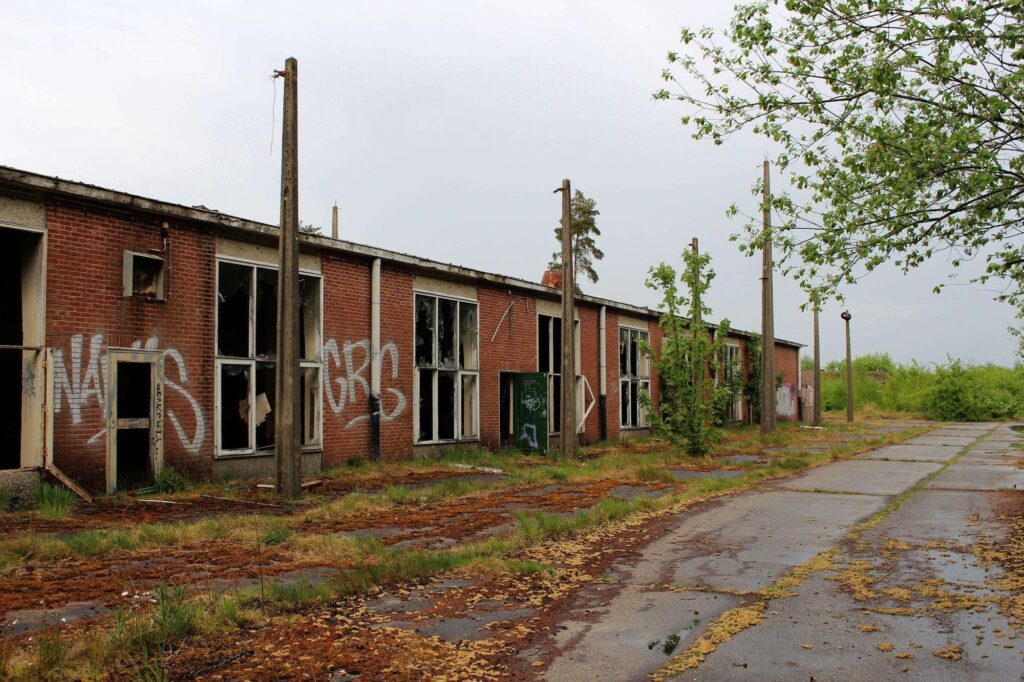
There are a lot of bunkers, so much that we don’t have the time to explore all of them. The first two bunkers we see are small; they are guarded off by a cell door followed by a steel door. All the locks had been cut, so we could enter inside. Like any other bunker on the terrain, it is empty, except for some ceiling lights. It’s cool to see that these 2 little bunkers are an identical copy of each other.
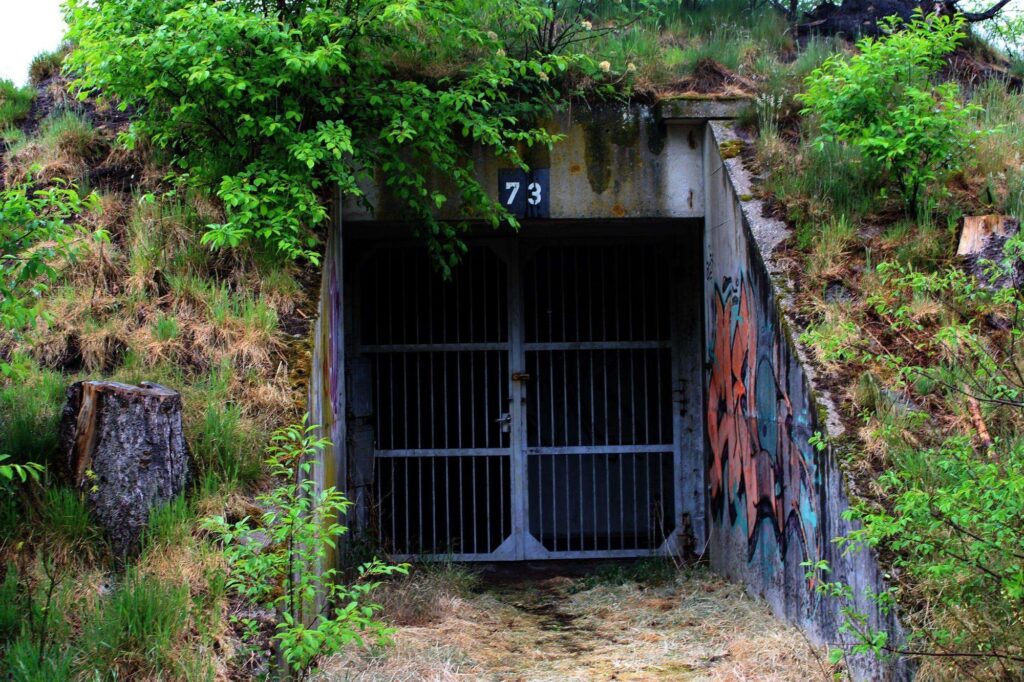
Up ahead is where the storage bunkers are; the storage bunkers are all the same, except for one thing they are either solo or duo, meaning that they are on their own or share the same ‘hill’. The bunkers are protected by thick reinforced concrete and a steel door (approx 40 cm thick). The doors could be opened and closed with a steel chain on the right side of the entrance, although 95% of these chains aren’t working anymore, after some walking around, we found two or three bunkers where we could open and close the door, pretty neat! The bunker interiors are all the same, empty. Except for the ventilation and ceiling lights. On the walls you can see the dimensions of the bunker, 25 meters long and 8 meters wide (82×26 feet).
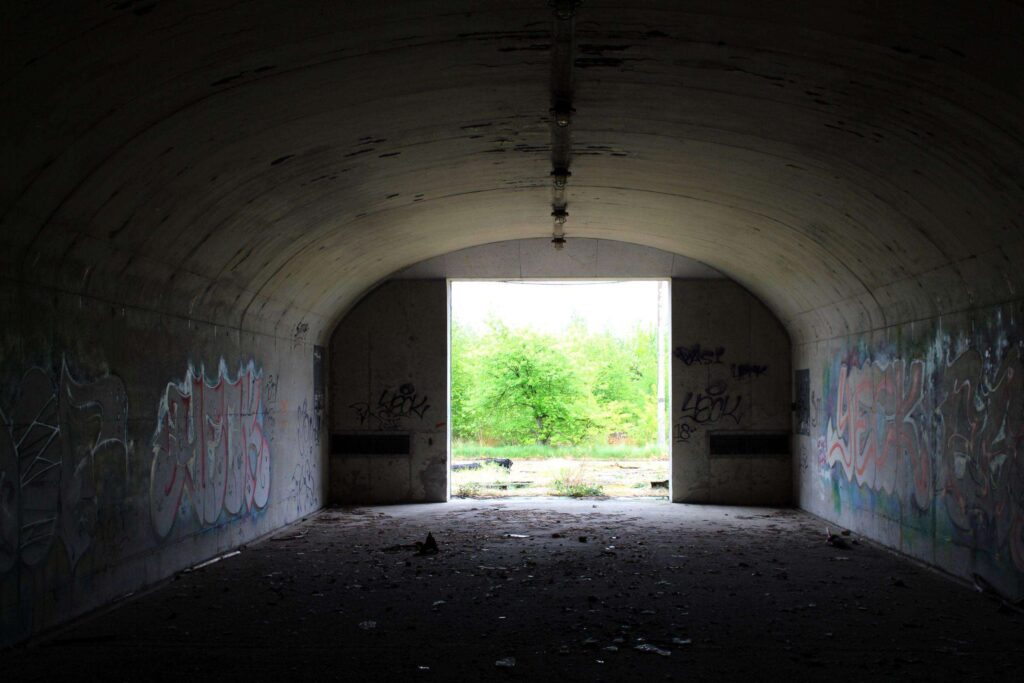
There’s more than just bunkers, we stumbled across some smaller buildings on our way to some larger buildings we saw on satellite images. All these buildings are experiencing some decay issues due to vandalism. We found what appears to be a machine room that had been completely flooded.
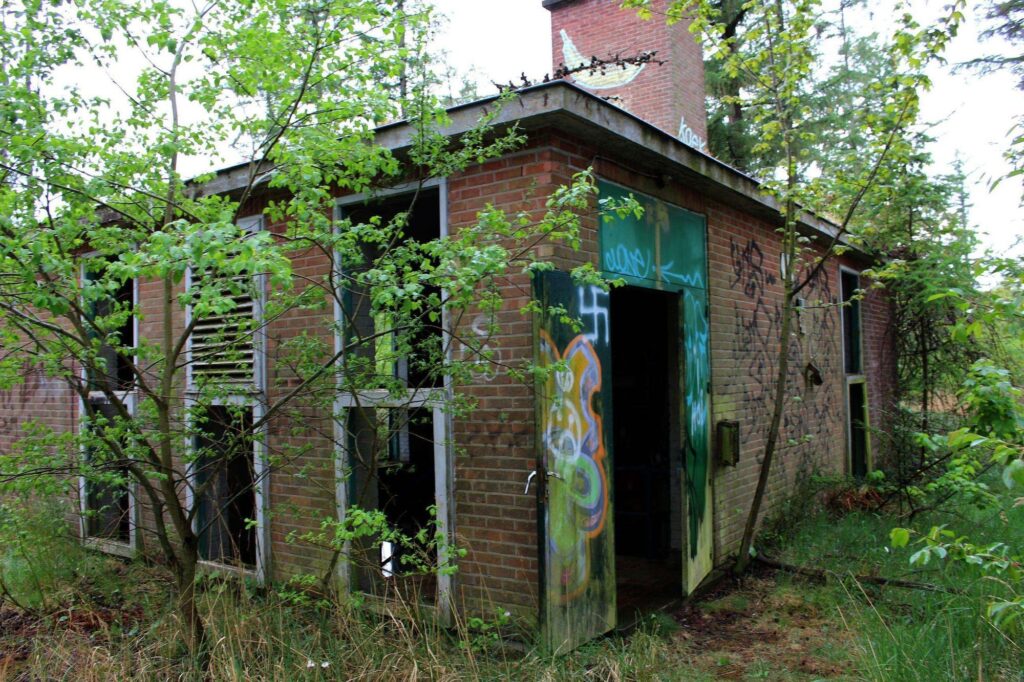
After exploring some bunkers, we made our way to the larger buildings we had seen on satellite images. They were all used for storage. To our surprise, all of these buildings are currently in use. After some research, we found out that the entrance and main buildings of the depot have been reconverted to a refugee center, and this is where they store their extra materials, and used goods.
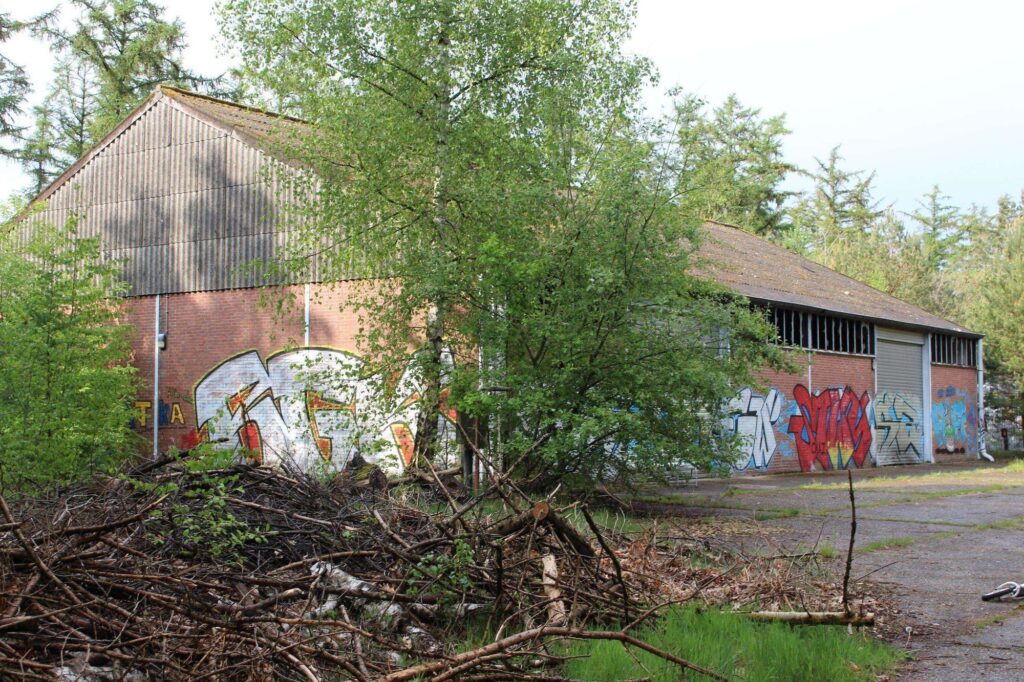
In the first building (a garage) was a caravan, and a lot of different types of building materials. The second building (a hangar) was filled with trash; the place looked like a landfill. There were washing machines, fridges, bikes, and a ton of other stuff. The third building was another garage, filled with lockers, beds, mattresses, and more stuff for the refugee center. We decided to leave these buildings alone as they were still in use, and we didn’t want to cause any trouble.
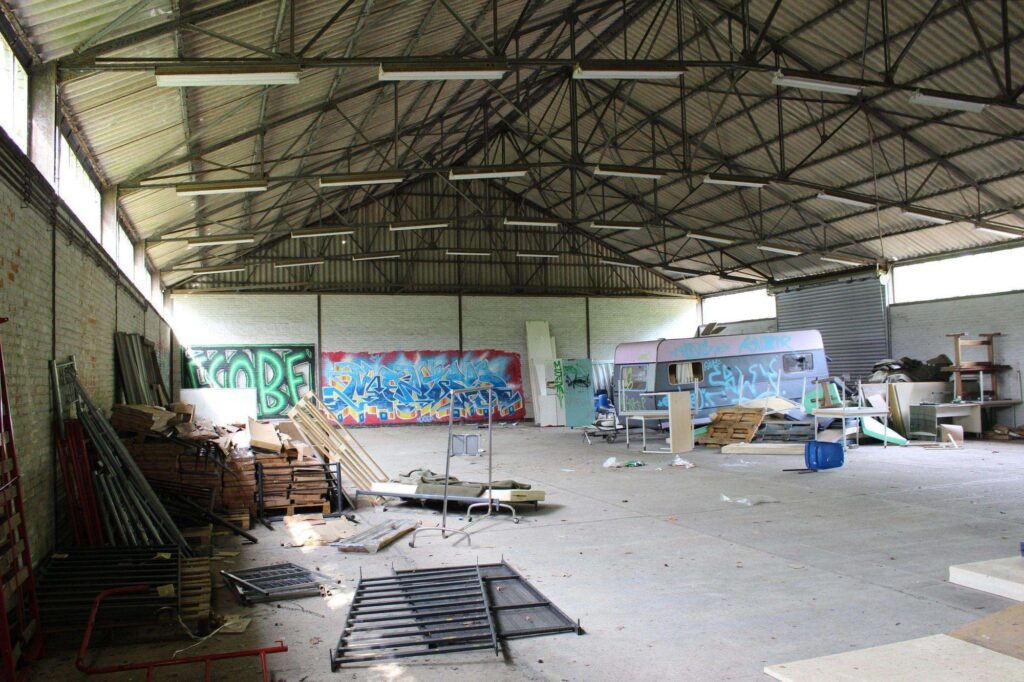
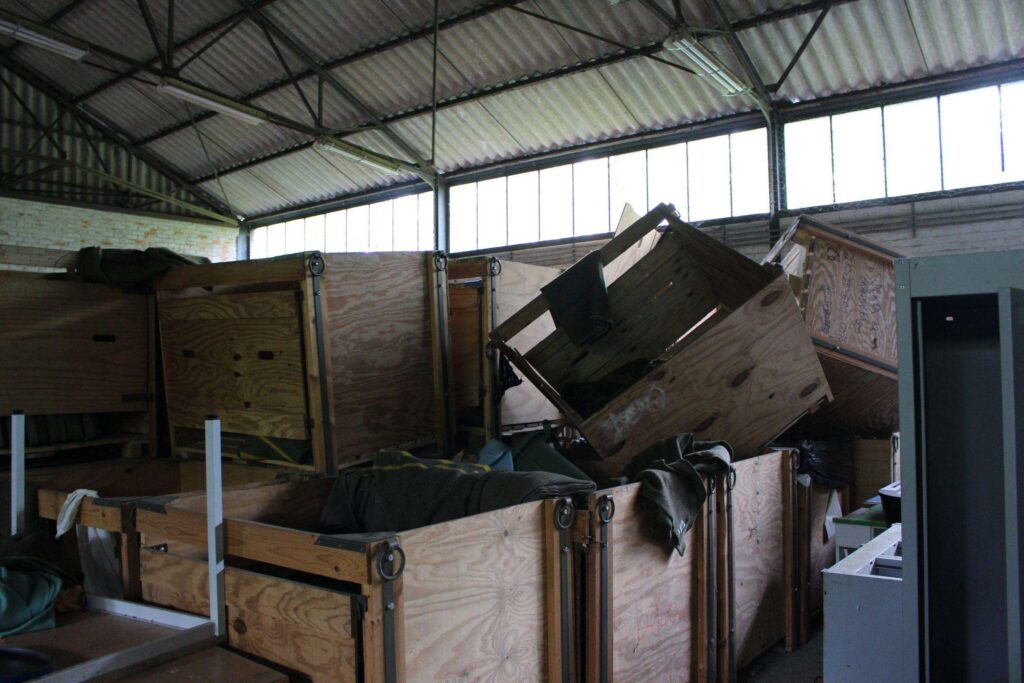
That was everything there was to explore; we made our way back through the forest to find the hole in the fence that we used to enter the place. It was yet another successful exploration day. Although the bunkers are all the same, it is pretty amazing to see the variation in terrain, and how nature is slowly taking back the depot. Take a look below to view more pictures.
